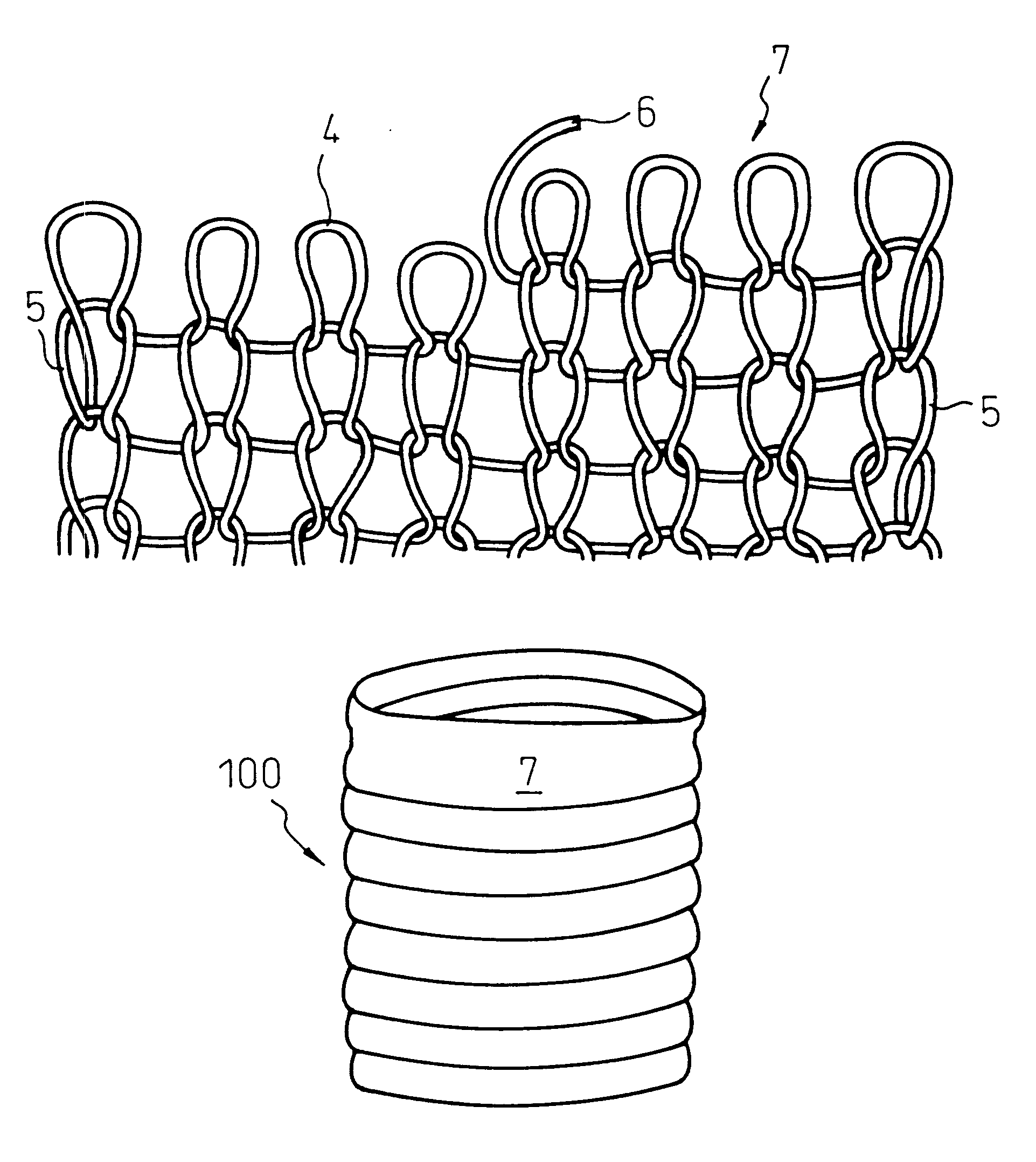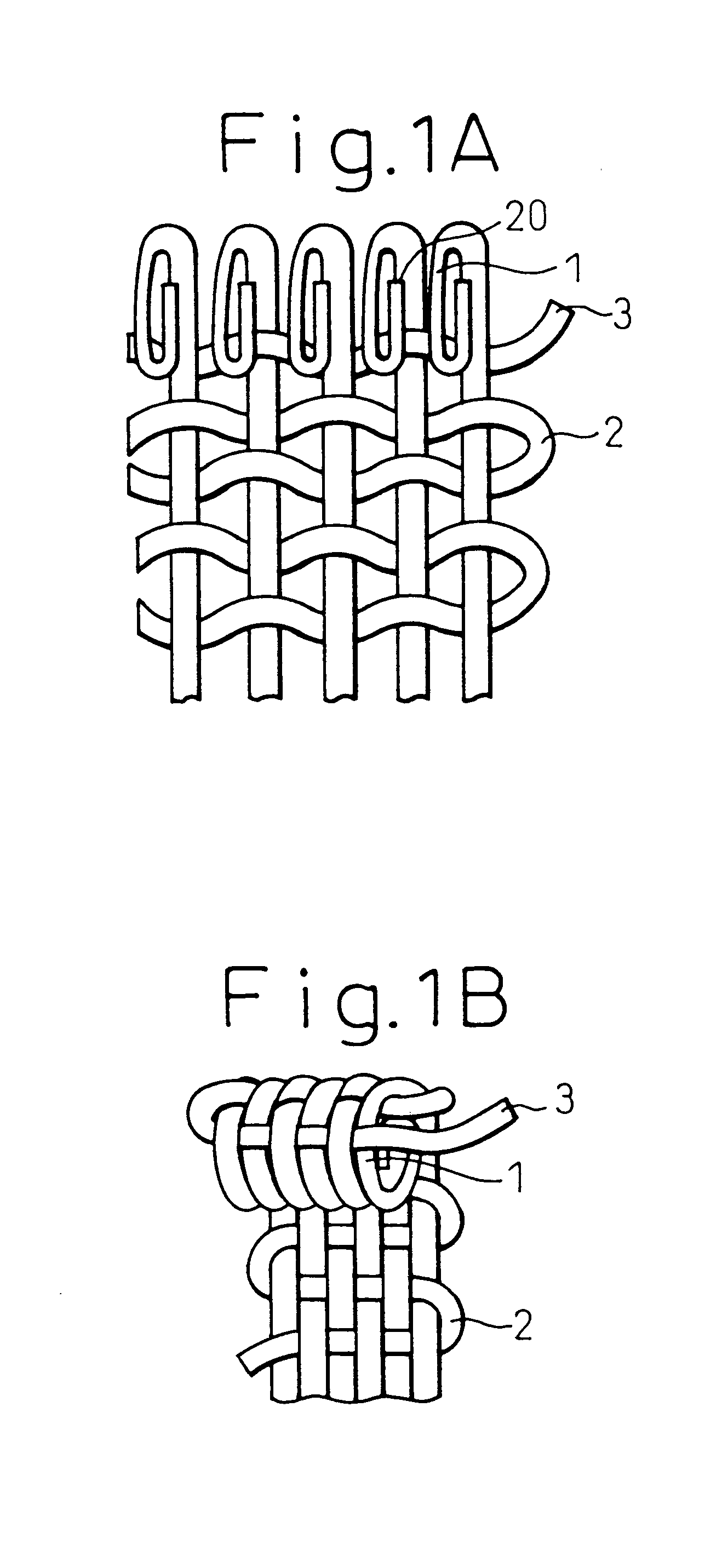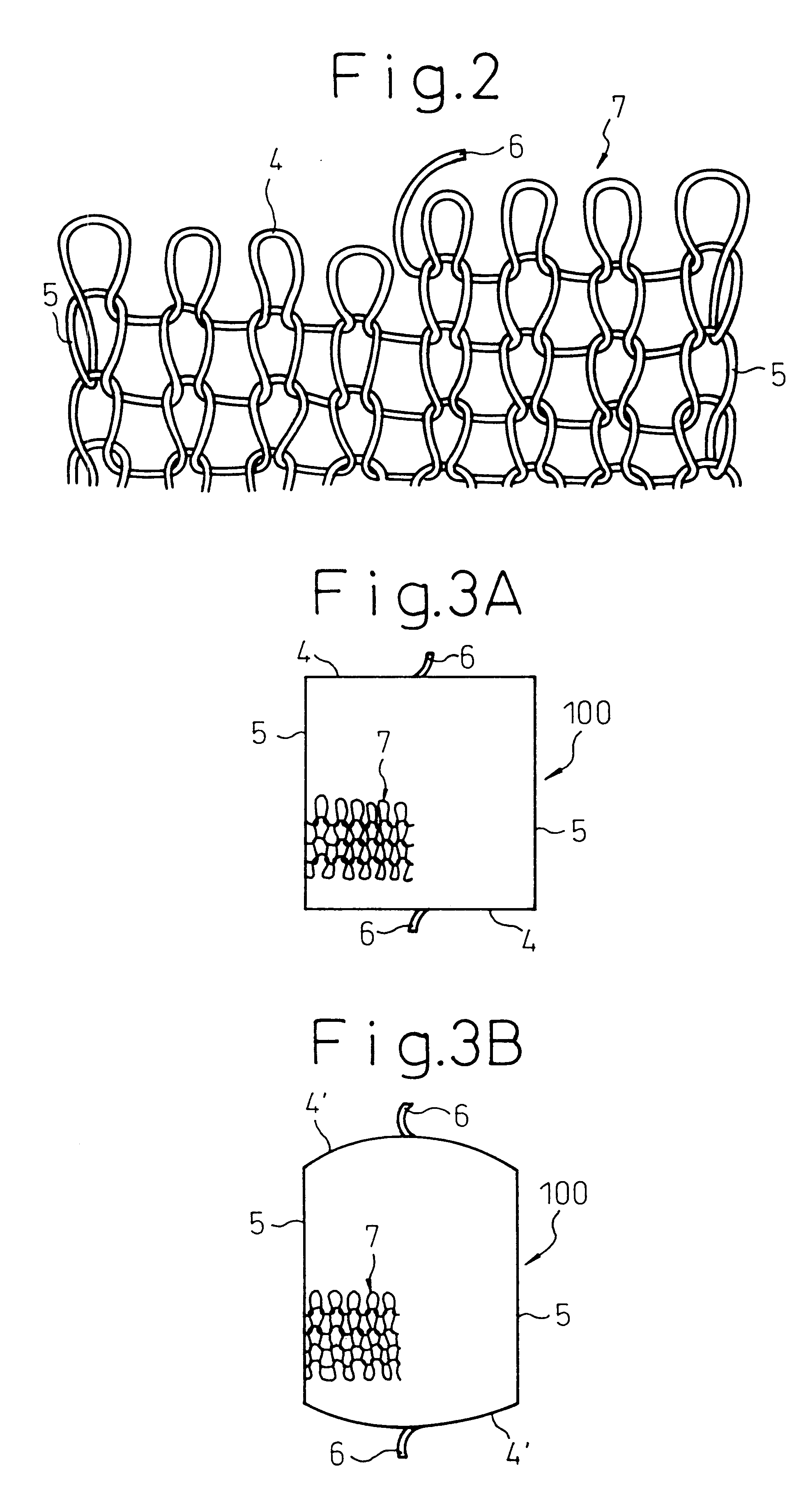Lint-free wiper
a technology of lint-free wipers and wipers, which is applied in the direction of carpet cleaners, ornamental textile articles, knitting, etc., can solve the problems of contaminant or lint brought into the clean room, become a structural obstacle, and difficult to use non-thermoplastic or non-melting fibers such as cellulosic fibers for this purpos
- Summary
- Abstract
- Description
- Claims
- Application Information
AI Technical Summary
Benefits of technology
Problems solved by technology
Method used
Image
Examples
example 1
A woven fabric of a plain weave structure was prepared by using a shuttle loom. A polyester multi-filamentary yarn (56 dtex / 36 f) was used as a warp yarn at a reed density of 97 ends inch and a polyester multi-filamentary yarn (83 dtex / 36 f) was used as a weft yarn at a weft density of 80 ends inch. First, the edge of the warp-wise direction was made by feeding the warp yarn without inserting the weft yarn and, then, the weft yarn was fed by a shuttle. At a time when the woven fabric of a predetermined length was obtained, a portion that served as another edge of the warp-wise direction was formed again by feeding the warp yarn but without inserting the weft yarn. 1358 warp yarns were warped, and the weft yarns were prepared as usual. The portion to which the warps were solely fed was cut at a distance of about 1 cm from a portion into which the weft yarns were inserted. Then, the fabric was folded twice or more in order to form loops including the woven fabric as shown, for example...
example 2
Using a tricot knitting machine of 32 gauge / inch, a loop-forming portion of an edge in a half-tricot stitch structure was first knitted from polyester multi-filamentary yarns (56 dtex / 36 f) used as both of front and back yarns by simply feeding the yarns without effecting the knitting operation. Then, a main body which serves as a wiping portion was knit, and, finally, a loop-forming portion of an edge was knit again without effecting the knitting operation. 600 front yarns and 601 back yarns were warped and prepared as usual. A non-knitted portion serving as a course-directional edge was cut at a distance of about 1 cm from the knitted portion, and folded twice or more to form loops including the knitted portion in the same manner as in Example 1. The folded portions were then sewn to prevent unraveling. The resultant fabric had a width of 47 cm and a length of 26 cm.
The obtained knitted fabric was treated in the same manner as in Example 1 to result in a lint-free wiper of 30 cm w...
example 3
By using a full-fashion knitting machine of 30 gauge / 1.5 inches, a three-plied yarn (three-folded yarn) of false-twisted polyester multi-filamentary yarns (83 dtex / 36 f) was knitted through a single yarn-feeding port. First, a starting portion was formed with a drawn-yarn stitch structure which was not easily unraveled, and then knitted with a plain stitch structure. The knitting end portion was linked to prevent unraveling to obtain a flat knitted fabric wiper of 20 cm wide and 20 cm long.
The obtained knitted fabric was treated in the same manner as in Example 1 to obtain a lint-free wiper. As shown in Table 1, the wiper contained very few lints and little fiber fell-off, and was suited for use in a high grade clean room.
PUM
 Login to View More
Login to View More Abstract
Description
Claims
Application Information
 Login to View More
Login to View More - R&D
- Intellectual Property
- Life Sciences
- Materials
- Tech Scout
- Unparalleled Data Quality
- Higher Quality Content
- 60% Fewer Hallucinations
Browse by: Latest US Patents, China's latest patents, Technical Efficacy Thesaurus, Application Domain, Technology Topic, Popular Technical Reports.
© 2025 PatSnap. All rights reserved.Legal|Privacy policy|Modern Slavery Act Transparency Statement|Sitemap|About US| Contact US: help@patsnap.com



